About Melanotaenia Praecox
Known commonly as the Neon Dwarf or Praecox Rainbowfish, Melanotaenia Praecox are a small, colorful rainbow fish from New Guinea. They are an interesting schooling species that is best kept in larger groups of 8-10+, with at least a 1:1 ratio of females to males. An excellent community fish, they do well in peaceful setups that are heavily planted.
I keep 20 dwarf neon rainbows - 10 males and 10 females - in my 90 gallon rainbowfish community tank. The neons share this aquarium with other larger rainbowfish species and they get along with everyone. Praecox are active swimmers and will go after most foods pretty aggressively once they're settled into the aquarium, which makes them fun to watch.
Sex can be easily determined based on size, body shape, and fin color when the fish reach adulthood. Both males and females will have shiny, iridescent blueish bodies. Adult male Praecox have red fins, while females have orange/yellow colored fins. Males will also have a larger, taller body shape with a more pointed head while healthy adult females will be smaller than the males.
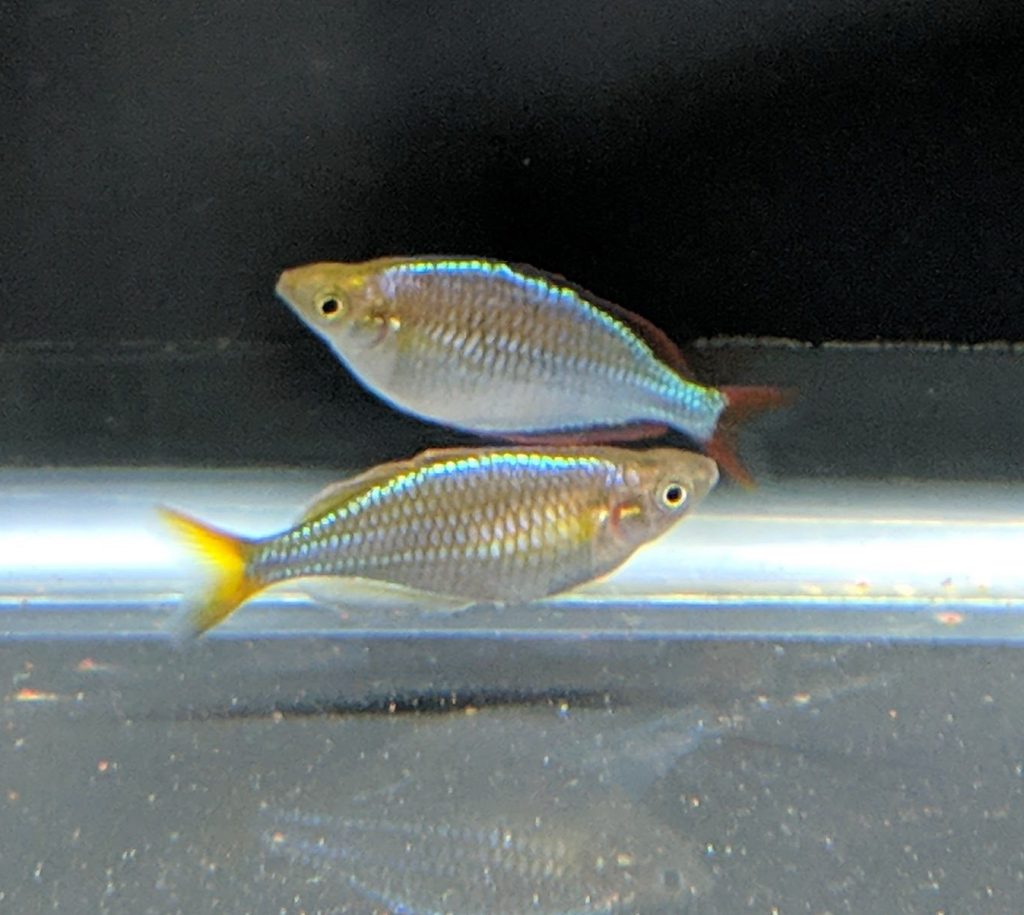
Setting up a Breeding Tank
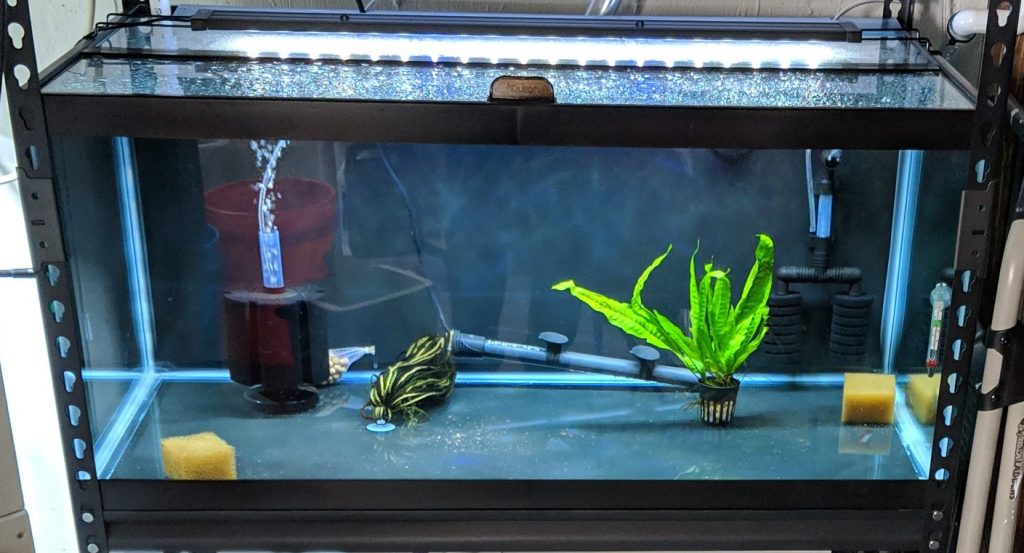
A breeding aquarium for Melanotaenia Praecox should be kept 73-82°F (23-28°C), and at a PH slightly above 7.0. As in most cases, aiming for stable parameters is better than aiming for perfection. A tank with a sponge filter is ideal for this because the fry of this species are incredibly tiny at birth.
Dwarf neons are egg scatterrers, so the ideal setup is a bare bottom aquarium with a large portion of java moss or a spawning mop. I have used both as egg laying substrates and the fish readily spawned in both the moss and the mop.
The purpose of the spawning mop is to give the eggs a safe place to stick to that can be removed and transferred to a rearing tank if desired. You can make your own spawning mop using wool string, or buy them pretty inexpensively.
Selecting and Preparing Breeding Stock
Before moving fish into a breeding tank you'll want to make sure you have a few healthy, well fed adult specimens ready to breed. As with any fish, a high quality diet consisting of a good variety of live, frozen, and dried foods is ideal to get them ready to breed. Females need to eat well to produce lots of eggs, and males will display their best colors and breeding activity when well fed.
Look for males with a nice tall body and colorful fins. Females should be grown out and well fed before being selected for breeding. I have had good success just selecting one pair and placing them in a breeding aquarium together.
The pair may take a couple of days to settle into the tank before they start to show breeding behavior. The male will display for the female and the two will swim through their chosen spawning site, which should be a spawning mop or moss portion. Eggs will be deposited over the course of a few days, so dont pull the pair out as soon as you see eggs.
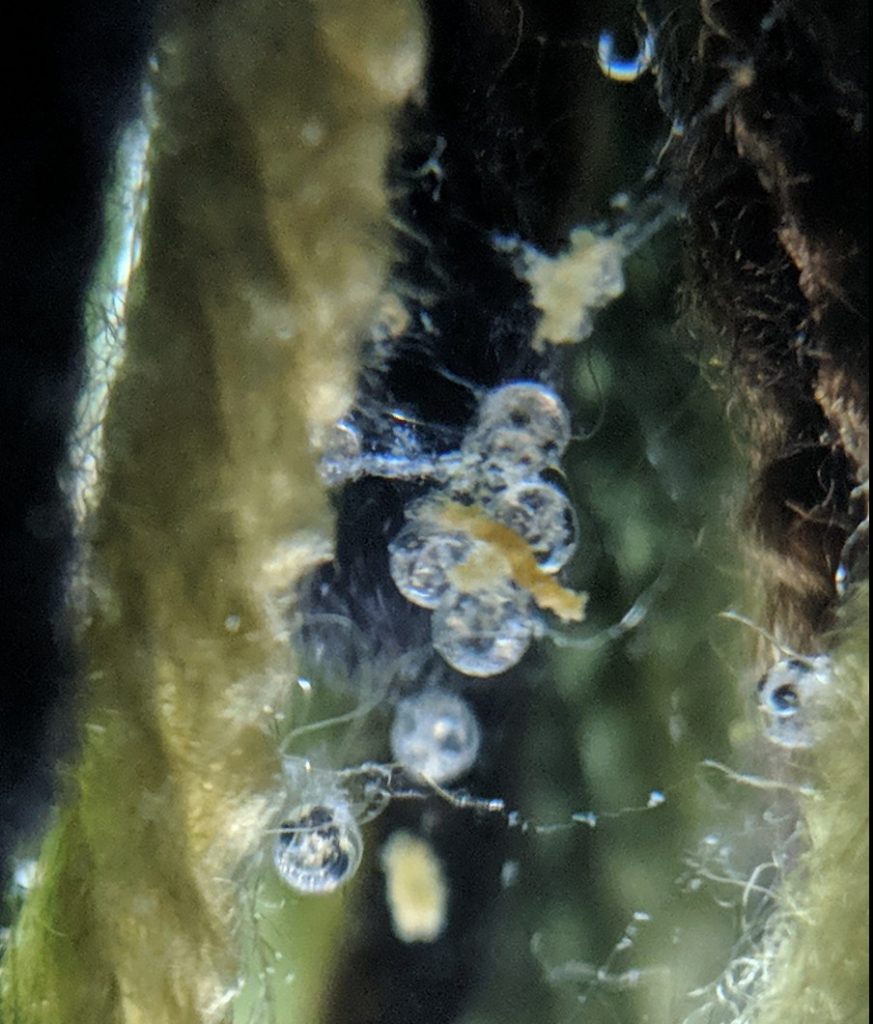
Praecox eggs are very small so they can be challenging to spot. Once the pair has spawned, they can be removed from the breeding tank and the eggs will hatch within a week. You can also carefully move the spawning mop or moss with the eggs on it into a fry growout tank with a sponge filter.
Caring for M. Praecox Fry
When dwarf neons hatch they are tiny. Like, crazy small - less than half a centimeter. Because they are so small these fry need very fine powdered fry foods, cultured infusoria, or live microworms to feed on. I would recommend having a combination of very small foods ready before your fry hatch. Even newly hatched baby brine shrimp will be too large for newborn M. praecox to swallow.
After a week or two on starter fry foods the young should be large enough to take baby brine shrimp, which you should know how to hatch yourself if you want to breed fish. Baby fish should be fed multiple times a day for optimal survival. They have very short digestive systems and no accumulated body mass to live on, so they need to eat frequently.
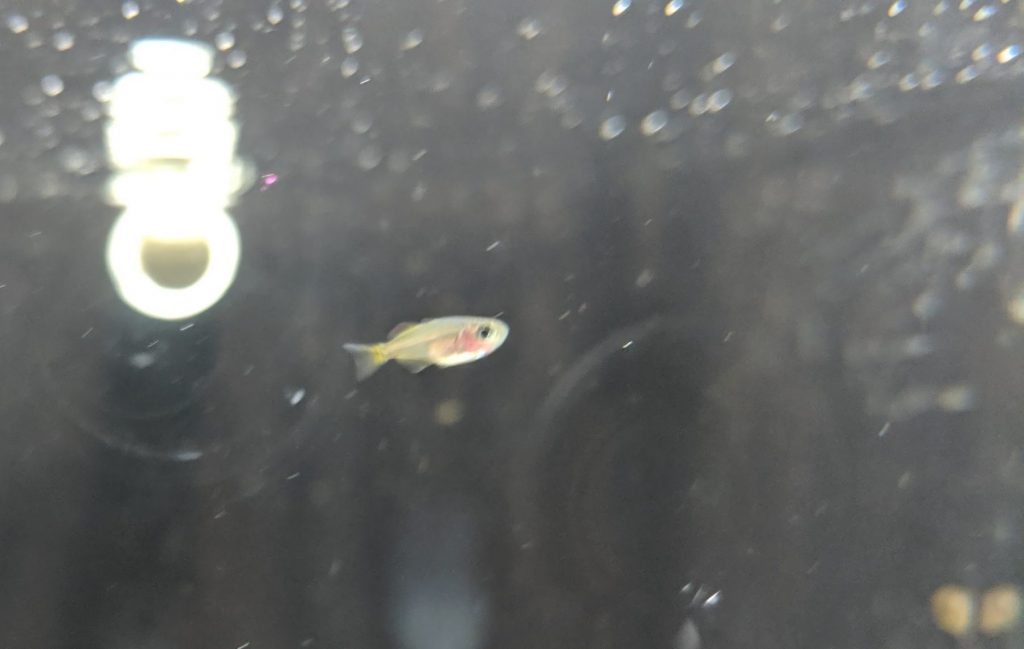
M. praecox fry should eat readily and will put on some decent size in just a few months if well fed. These fish are amazing to watch in large schools, so successful breeding is very rewarding.

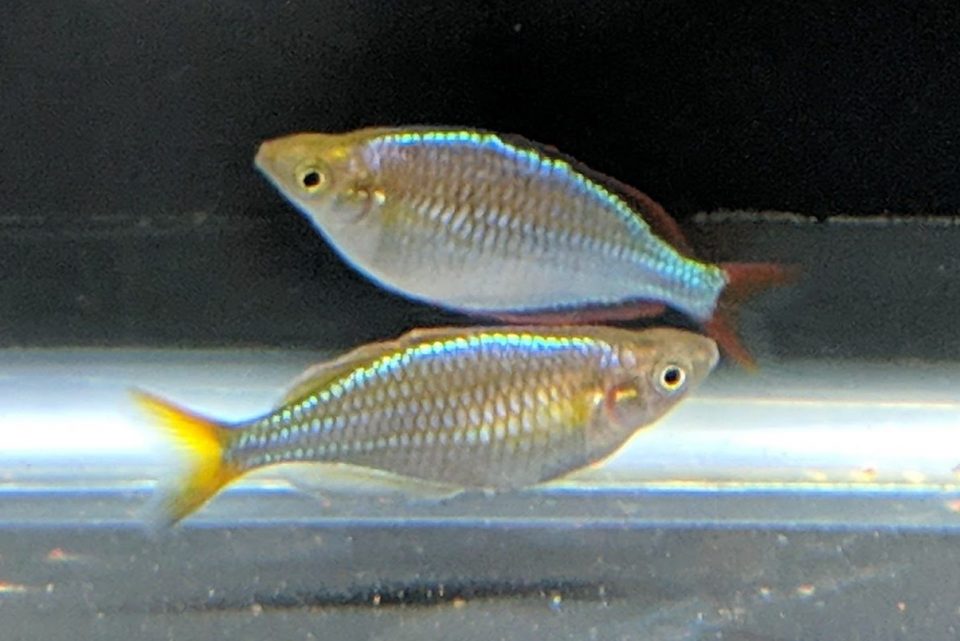
Hi, how long before you can sex the praecox fry? We have various fry that are about 2-3 months along now, with the largest at about 2cm. However, it doesn’t appear that there are any differences that would indicate male or female ratio.
Their tails and fins should begin showing color differences at around 3 months if they are being fed several times a day. Make sure they're getting live foods like microworms and baby brine shrimp frequently for optimal growth. They'll start to color up
How can you tell if they are full of eggs? I have a very chubby looking dwarf rainbow female in a tank with 2 other females and one male.
If she's well fed in a tank with a male she probably is ready to spawn. Rainbowfish don't really "fill up" with eggs, they spawn every morning for several days. The eggs are very small and will usually be eaten by other fish unless you have a spawning tank set up.
I have a male and three females.
A few questions…
1. Can they all be in the breeding tank? Or is it best for just one male and one female to be in there?
2. How long should adults be in the tank before I remove them? I saw that they spawn ever day? So I’m a few days I should remove the adult’s?
I would probably do one male with two females. I let them spawn in the tank for about 10-12 days usually. They lay eggs every morning but you might only get a few eggs per day that don't get eaten if you aren't using spawning mops and pulling them daily. At 10 days the eggs laid on the first couple days should start to hatch out assuming they started spawning immediately, so that's a good time to pull the adults.
Hi,
I have a pair in a start up tank that I will transfer to a ever 48-53 gallon tank in a few months.
The pie have colored up marvelously.
The male, has been showing a unexpected coloration in the am – he develops a very pale butter yellow stripe along his dorsal edge that starts at his mouth and extends to his dorsal fin. I watched him this morning and he can control the intensity of the stripe instant.Is this courtship/breeding behavior or something else?
Yes that is their breeding coloration, the males get a bright yellow stripe on their heads from the mouth to the start of the dorsal fin. This behavior will usually be most visible in the morning when light starts to hit the tank.
I have had 12 new praecox in a quarantine tank for 12 days now. For the last couple of days, one of the fish had a black stripe on its side in the morning, but it is gone by noon or 1:00 pm. I thought the fish was a female at first, but now I am not so sure. Have you seen this stripe before? The fish seems very excited when the stripe is present.
Praecox (and most rainbows) breed in the morning, so that is when you will see their mating colors. You might have a hybrid rainbowfish, as praecox do not normally have a visible lateral line. It's very common for fish in the genus melanotaenia to cross breed and hybridize. A male praecox will have red fins and a solidly colored blueish body with no lateral line. They will display an orange/yellow stripe down their forehead when in breeding display. I would say your fish is healthy and wanting to breed, but if it doesn't look like a typical praecox it might be a good idea not to use it as a breeder.
100% agree with Crowlin.
I have a pair – male/female.
The way they change their colors is impressive.
The male will usually do a shimmer dance and chance the female. He will display his yellow/orange stripe when he is randy; my guy has it from his mouth up to his dorsal fin. Boys have the red fins and the girls have yellow.
I would love to breed this fish – they are amazing to watch.
I
I have four Praecox (3 male, one female) in a 29 gallon with guppies, dwarf platies, couple of dwarf plecos, couple of cory catfish. A lot going on, but also a lot of plants and hideouts. What are the chances that my rainbows will find a place to lay eggs, or will they even try with all the madness around. I have seen the males with orange lines near their eyes in the morning when I first turn on the light and feed and didn't know what it meant until reading this. We have recently been seeing some very small fry (smaller than our guppy babies) hiding in gravel, and they grow very fast. Could these be rainbow fry, or am I just being overly hopeful. We have tons of guppy and platy babies showing up all the time, but these look different, eyes more to the side than on top like the guppies. Thanks in advance for any insights.
This is new for me to reach out like this but I’ll give it a go. I currently have 12 dwarf neon rainbows that are sub-adult and doing great. I have had them before over the 50 or so years of fish keeping and they are one of my favorites. I have 3 other varieties of rainbows in another tank. Will a 10 gallon tank work for a breeding tank? Should the sponge filter be “seeded “ already before breeding? How can I get hold of micro worms, infusoria or other fry foods? Thanks
Hi Brian, yes I used a 10 gallon tank to breed my pair, as long as they are the only 2 fish in the tank it will work great. You can purchase microworm cultures on eBay or hatch your own baby brine shrimp - I have articles on both topics here on the blog that should help.
Thank you for the help. They would be the only two in the tank. I have hatched baby brine but a long time ago. Will try the micro worms too.